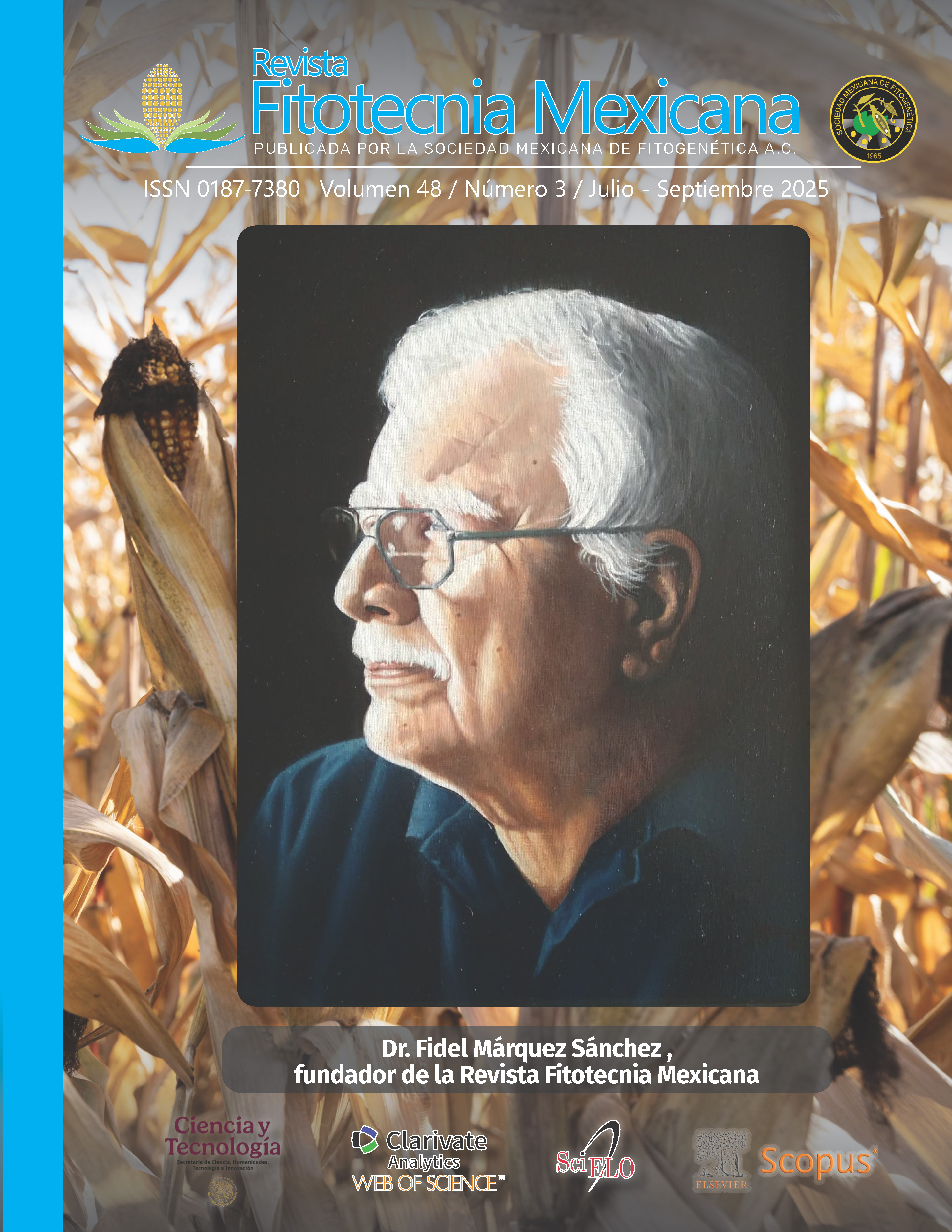INTERACTION AND INTERDEPENDENCE OF YAM BEAN (Pachyrhizus erosus L.) ECOTYPES WITH SEED QUALITY TESTS
Main Article Content
Abstract
In Mexico, there are no standardized methodologies to evaluate the physiological quality of yam bean seed; thus, the objective of this research was to determine the physiological response of yam bean (Pachyrhizus erosus L.) ecotypes seed (yellow, purple and black) using different seed quality tests. Germination test (Ge), vigor through electrical conductivity (EC), accelerated ageing (AA), soak test (ST), initial vigor of seedling in sand bed (SB) and emergence in field (FEM) were evaluated. Regarding the laboratory tests, in Ge, three temperatures (20, 25 and 30 °C) were used; in EC, the exposure time in water (24 and 48 h) and temperature (25 and 30 °C) were varied; in EA, temperature (42 and 45 °C) and stress exposure time (24, 48, 72 and 96 h) were varied, and in ST, the exposure time in water (24 and 48 h) and temperature (25 and 30 °C) were combined. Multivariate interaction analysis of the three ecotypes and their evaluation tests or environments was performed. Results showed that the tests under some conditions can discriminate the performance between the ecotypes; in this sense, the yellow seed variety showed the best response in all tests. The purple seed variety showed medium vigor and the black seed showed low vigor in all tests, according to the interaction analysis. When observing genetic differences between seed lots it is recommended to carry out the Ge test at 25 °C; for vigor through EA, 45 °C should be combined with a time of 24 h; for ST 48 h soaking and 25 °C are recommended, and for EC 72 h soaking in deionised water at 30 °C provides the best results.

